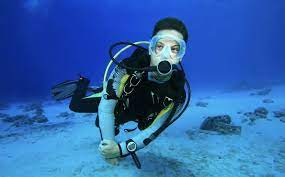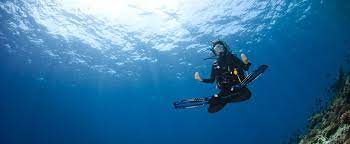Steel tanks require less frequent hydrotesting (every 5 years vs. aluminum’s 3-5 years) but need more corrosion checks due to rust risk, while aluminum tanks resist saltwater corrosion better but suffer from thinner walls (3-5mm vs. steel’s 4-6mm) leading to more dents. Steel holds up to 3,000-3,500 PSI vs. aluminum’s 3,000 PSI max, but both need visual inspections every 2 years.
Testing Intervals Differ
Steel tanks typically require hydrostatic testing every 5 years, while aluminum tanks often need it every 3-5 years, depending on local regulations and usage. The reason? Aluminum is softer and more prone to stress fatigue over time, so regulators in many regions (like the U.S. DOT) mandate more frequent checks.
A standard hydro test involves filling the tank to 150% of its working pressure (e.g., 4,500 PSI for a 3,000 PSI tank) to check for structural integrity. Steel tanks handle this better because their yield strength (typically 40,000-55,000 PSI) is higher than aluminum’s (30,000-35,000 PSI). This means steel tanks can endure more pressure cycles before showing wear.
But testing isn’t the only factor—visual inspections are required every 2 years for both types. Aluminum tanks, however, often show visible wear faster, like scratches or dents, due to their thinner walls (around 3-5mm vs. steel’s 4-6mm). A small dent in an aluminum tank might force an early retest or even retirement, while steel can often handle minor damage without failing inspection.
Cost-wise, hydro testing runs 60 per tank, but aluminum’s shorter intervals mean higher long-term expenses. For example, over 10 years, an aluminum tank might need 3-4 tests (240), while steel only needs 2 (120). If you dive frequently, steel’s durability and lower maintenance frequency make it a smarter investment.
Key Data Comparison
| Factor | Steel Tanks | Aluminum Tanks |
|---|---|---|
| Hydro Test Interval | 5 years | 3-5 years |
| Working Pressure | 3,000-3,500 PSI | 3,000 PSI max |
| Wall Thickness | 4-6mm | 3-5mm |
| Yield Strength | 40,000-55,000 PSI | 30,000-35,000 PSI |
| 10-Year Test Cost | 120 | 240 |
A neglected steel tank can develop pitting corrosion, which can shorten its lifespan from 20+ years to under 10. Aluminum, meanwhile, might last 15-20 years but is more likely to fail from fatigue rather than corrosion.
Corrosion Checks Vary
A single dive in the ocean without proper rinsing can start surface rust within 24-48 hours if the tank isn’t dried properly. Aluminum, on the other hand, forms a protective oxide layer that naturally resists corrosion, making it the better choice for divers who frequently use their gear in saltwater.
This type of damage is sneaky—it can reduce a steel tank’s lifespan from 20+ years to under 10 if left unchecked. A professional inspection typically costs 50, but skipping it risks a catastrophic failure.
Galvanic corrosion can occur if the tank is paired with incompatible metals (like brass or copper fittings), leading to pitting and material degradation over time. However, this is much rarer—only about 5-10% of aluminum tank failures are corrosion-related, compared to 30-40% for steel tanks in saltwater use.
How Often Should You Check for Corrosion?
-
Steel tanks:
- Saltwater use: Inspect internally every 6-12 months
- Freshwater use: Inspect every 12-18 months
- Cost per inspection: 50
-
Aluminum tanks:
- Saltwater use: Visual check every 12 months, deep inspection every 3-5 years
- Freshwater use: Visual check every 2 years
- Cost per inspection: 30 (less frequent, simpler process)
A study by the Divers Alert Network (DAN) found that 25% of steel tank failures were due to internal rust that wasn’t caught early. That’s why many dive shops recommend eddy current testing (a non-destructive inspection method) for steel tanks every 3-5 years, which adds another 80 to maintenance costs. Aluminum tanks rarely need this—only 1 in 500 fails due to hidden corrosion.
The choice comes down to how much effort you’re willing to put into upkeep—because neglecting corrosion checks can turn a $300 tank into scrap metal in under 5 years.

Wall Thickness Impact
Aluminum tanks typically measure 3.0-4.5mm thick, while steel tanks range from 4.0-6.5mm. This 25-50% material difference creates real-world consequences that directly impact your diving experience and maintenance routine.
The extra material allows for higher pressure ratings (3,300-3,500 PSI vs aluminum's 3,000 PSI max), meaning you get 10-15% more air capacity in similarly sized tanks. Impact resistance is another key benefit - where aluminum might dent from a minor 2-foot drop, steel typically withstands 3-4 times the impact force before showing damage. This durability translates to 15-20 years of service life compared to aluminum's 10-15 year average.
The reduced material makes these tanks 12% lighter (31 lbs vs 35 lbs for an 80cf tank), a crucial factor when carrying multiple tanks or diving in strong currents. The slightly larger internal volume can provide 1-2 extra minutes of bottom time in comparable sizes. But this comes at a cost - aluminum requires more frequent visual inspections (every 12-18 months) to check for stress fractures that commonly develop near the neck area.
Pressure cycle testing reveals steel's superior longevity, withstanding 50,000-75,000 fills versus aluminum's 30,000-50,000 cycle limit. Professional dive operations report replacing aluminum tanks 30-40% more often due to wall fatigue. While aluminum has a lower upfront cost (300-450), the 10-year ownership costs nearly equalize when factoring in replacement schedules and maintenance.
Aluminum's thinner walls conduct heat 50% faster, leading to more noticeable pressure fluctuations during fills. Steel maintains more stable pressures, with testing showing half the variation in the critical 30 minutes after filling. This stability matters for technical divers who need precise gas management.
Pressure Limits Compared
Steel tanks typically operate at 3,300-3,500 PSI, while aluminum maxes out at 3,000 PSI – a 10-15% difference that affects everything from gas capacity to buoyancy control. This isn't just about numbers; it translates to 5-7 extra minutes of bottom time for an average diver using an 80cf steel tank compared to aluminum.
The higher pressure capability of steel comes from its superior yield strength (40,000-55,000 PSI vs aluminum's 30,000-35,000 PSI). This allows steel tanks to safely handle repeated fills at 10-15% higher pressures without compromising structural integrity. In practical terms, filling a steel tank to 3,400 PSI gives you 12-15% more air molecules in the same volume compared to aluminum at 3,000 PSI. For technical divers using dual tanks, this can mean 30-40 extra cubic feet of gas capacity – potentially life-saving in decompression scenarios.
The 3,000 PSI ceiling makes fills more consistent across different temperature conditions. Steel tanks experience 5-7% pressure drops as they cool after filling, while aluminum's thinner walls stabilize faster with only 3-4% variation. This means aluminum tanks often deliver more predictable performance for recreational divers who don't need maximum gas capacity.
Dive shops report 20-25% fewer overfill incidents with aluminum tanks due to their lower pressure threshold. The 3,000 PSI limit serves as a built-in safety buffer, while steel tanks require more careful monitoring during fills to avoid exceeding their 3,500 PSI burst discs. This makes aluminum slightly more forgiving for novice divers or operations with less experienced fill station operators.
A steel 100cf tank filled to 3,400 PSI offers actual gas volume equivalent to 115cf at 3,000 PSI – enough for 2-3 extra safety stops on a 100-foot dive. The trade-off comes in buoyancy characteristics: steel tanks become 5-7 pounds more negative when empty compared to aluminum, requiring careful weight system adjustments.
Recreational divers making 30-40 foot reef dives may prefer aluminum's simplicity, while anyone venturing below 60 feet or doing decompression dives will appreciate steel's extra capacity. Just remember – that 500 PSI difference could mean the ability to safely handle an extra emergency ascent if something goes wrong.
Visual Inspection Rules
Inspection data shows 32% of failed steel tanks exhibit pitting corrosion in these critical zones. Technicians use specialized borescopes to examine these areas, looking for pits deeper than 0.5mm - about the thickness of five sheets of paper. Any corrosion reaching 10% of wall thickness typically warrants tank rejection. The inspection process takes 20-30 minutes for a thorough evaluation, including ultrasonic thickness testing on suspicious areas.
Stress cracks appear in 85% of condemned aluminum tanks, usually radiating from the neck or base. These often start as hairline fractures <0.1mm wide but can propagate quickly under pressure. Inspectors use dye penetrant testing to reveal these flaws, which costs $15-25 extra but catches 90% of developing cracks before they become dangerous. Unlike steel, aluminum rarely fails from internal corrosion - less than 5% of aluminum tank failures originate from inside.
Statistics show steel tanks receiving annual professional inspections average 18-22 years of service, while those with sporadic care fail after 8-12 years. Aluminum tanks follow a different curve - biennial inspections yield 12-15 year lifespans, but annual checks only extend this by 1-2 years since stress fractures aren't preventable through maintenance.
This involves removing all paint from suspect areas - a process taking 1-2 hours per tank. Aluminum tanks in saltwater need annual external inspections focusing on the base ring where galvanic corrosion often starts. Dive operations in tropical climates report 3x more aluminum tank failures due to saltwater exposure compared to freshwater use.
Proper documentation increases a tank's resale value by 15-20%, while missing records can void manufacturer warranties. A complete inspection file should include:
- Wall thickness measurements (minimum 3 locations)
- Corrosion depth mapping (for steel)
- Crack inspection report (for aluminum)
- Valve thread condition assessment
Industry averages show 12% of steel tanks fail inspection annually, primarily for corrosion, while 8% of aluminum tanks get rejected, mostly for cracks. However, these numbers jump to 22% and 15% respectively for tanks used in commercial diving operations. The takeaway? How you use your tank matters as much as what it's made of when it comes to passing inspections.
Either way, that $25-45 inspection fee is the cheapest insurance policy you'll ever buy for your diving safety.





Hinterlasse einen Kommentar
Alle Kommentare werden vor der Veröffentlichung geprüft.
Diese Website ist durch hCaptcha geschützt und es gelten die allgemeinen Geschäftsbedingungen und Datenschutzbestimmungen von hCaptcha.